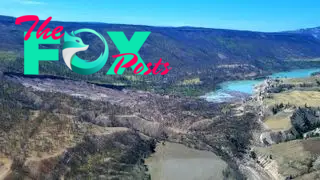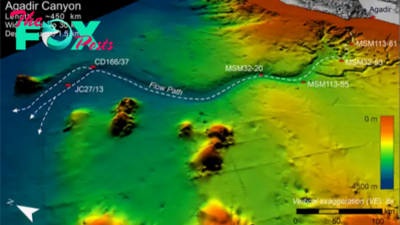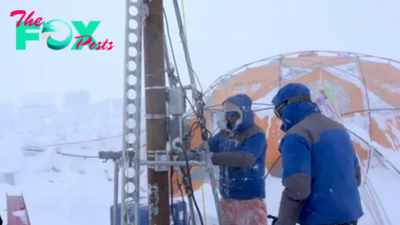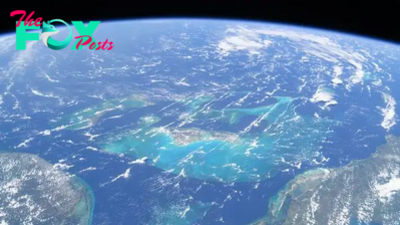Science
Earth from space: Massive landslide dams Canadian river, trapping endangered fish on the wrong side
Striking new satellite imagery shows a Canadian river quickly swelling in size after a massive landslide completely dammed the waterway. The obstruction may have also doomed an endangered salmon population by preventing the individuals that survived the sudden damming from reaching their spawning grounds upriver.
The massive landslide occurred late on July 30 near Farwell Canyon on the southern bank of the Chilcotin River — a 150-mile-long (240 kilometers) tributary of the Fraser River. The landslide took place around 14 miles (22 km) upstream from where the Chilcotin joins the Fraser, dumping roughly 640 million cubic feet (18 million cubic meters) of earth and rock across the waterway and completely blocking its flow, according to an emergency statement from the British Columbia government.
Within less than 48 hours, the river had swelled significantly, breaking its banks at several points and forming a debris-filled lake behind the blockage, images from NASA's Earth Observatory show. The stretch of the Chilcotin between the landslide and the Fraser River was left almost completely dry.
Regional authorities quickly issued evacuation orders for residents living close to the banks downstream of the blockage, fearing that the rocky dam would eventually break and release a surge that could cause flash flooding or trigger further landslides downstream. It is unclear how many people were evacuated.
Related: See all the best images of Earth from space

On Aug. 5, part of the dam finally broke, unleashing a torrent of water that violently raced through the previously emptied riverbed. Despite the water flowing at more than 12,000 cubic feet (3,500 cubic meters) per second, the surge of water did not cause any major damage.
However, the landslide will likely have a major impact on the river's resident sockeye salmon (Oncorhynchus nerka), most of which were likely downriver of the landslide when it occurred, according to a statement from the Tŝilhqot'in Indigenous nation.
-

 Science13h ago
Science13h agoGiant underwater avalanche decimated Atlantic seafloor 60,000 years ago, 1st-of-its-kind map reveals
-

 Science13h ago
Science13h agoAl Naslaa rock: Saudi Arabia's enigmatic sandstone block that's split perfectly down the middle
-

 Science1d ago
Science1d agoSpaceX Falcon 9 rocket grounded for 2nd time in 2 months following explosive landing failure
-

 Science1d ago
Science1d agoJames Webb telescope spots 6 enormous 'rogue planets' tumbling through space without a star
-

 Science1d ago
Science1d agoAncient viral genomes plucked from glaciers reveal how pathogens have adapted to Earth's shifting climate
-

 Science2d ago
Science2d agoLarge patch of the Atlantic Ocean near the equator has been cooling at record speeds — and scientists can't figure out why
-

 Science2d ago
Science2d agoGravitational waves hint at a 'supercool' secret about the Big Bang
-

 Science3d ago
Science3d ago200 meteorites on Earth traced to 5 craters on Mars























